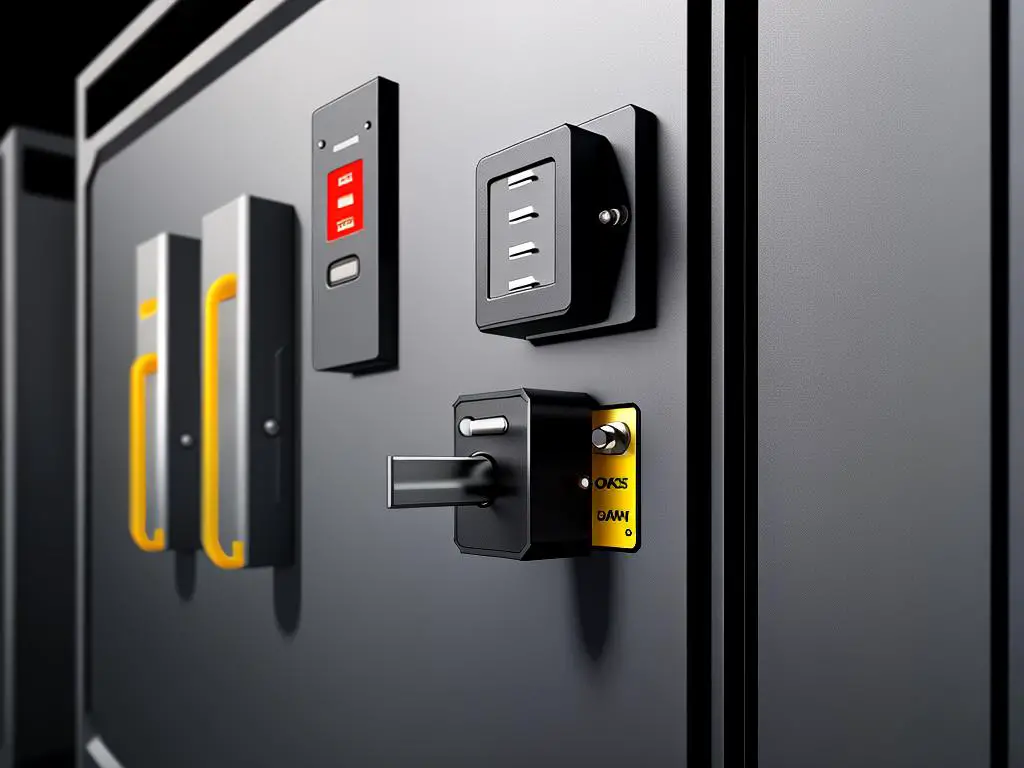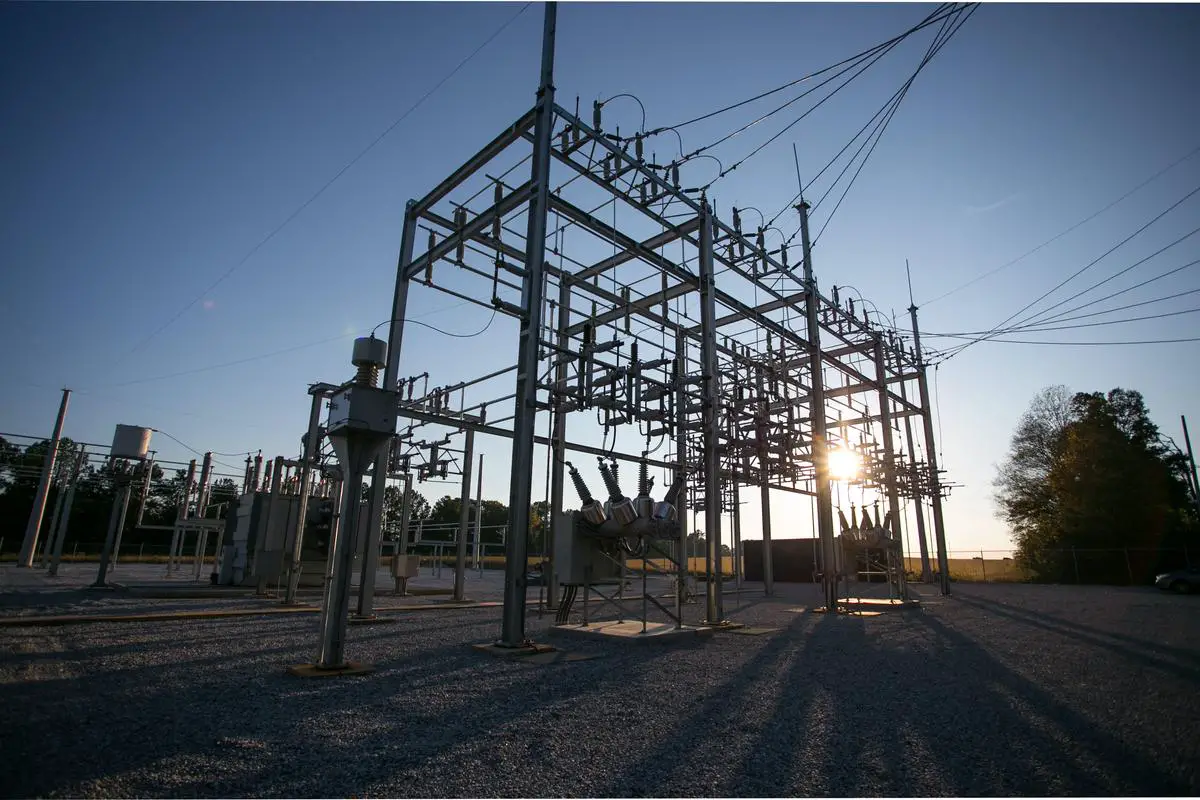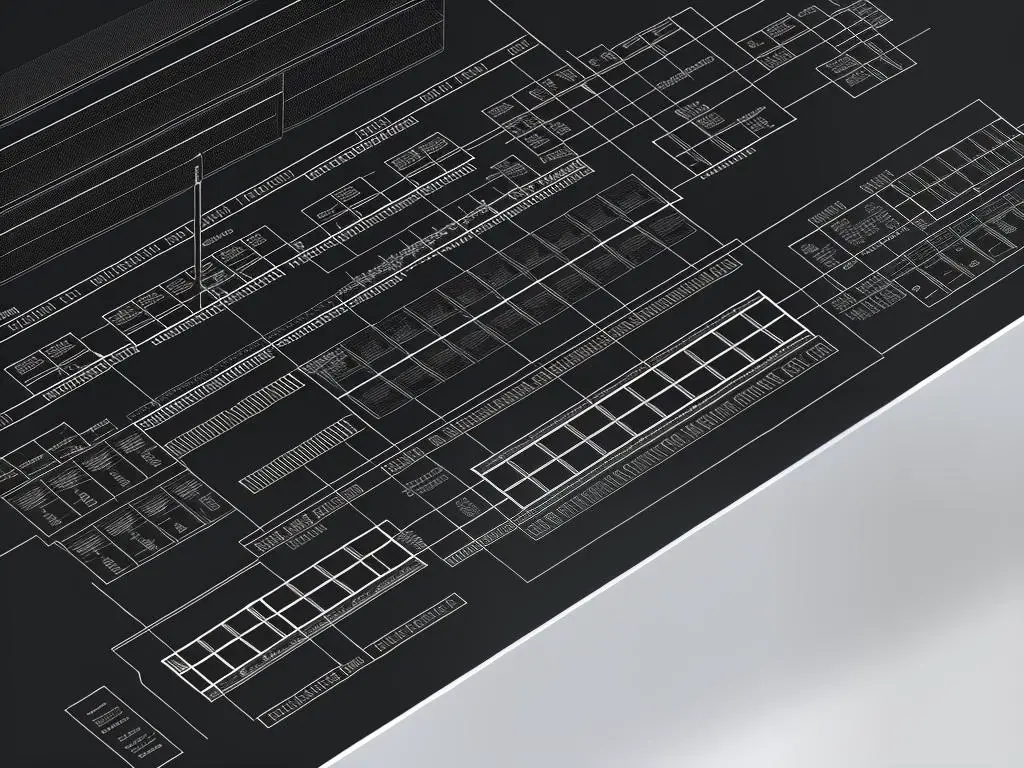Understanding Cybersecurity in Substation Automation: In the current era of digital transformation, power industries have embraced significant advancements in automation and connective technologies. Substation automation serves as a cornerstone in this development, revolutionizing how power distribution operations are managed. At the same time, this drive for automation also introduces substantial cybersecurity risks that necessitate vigilant monitoring and effective protective measures. This discourse delves into the intricacies of cybersecurity in the context of substation automation, outlining its significance, identifying potential threats, and exploring how standardizations like IEC 61850 and other security measures play a critical role in ensuring a secure, efficient, and reliable power system.
Introduction to Substation Automation
Understanding Substation Automation
Substation automation is a system used in power substations that uses data deriving from intelligent electronic devices (IEDs), control, automation and data acquisition, from both protected and control gear. The purpose of substation automation is to optimize, control and automate the power distribution process from the central office to the substation and beyond. Substation automation ensures higher levels of efficiency, reliability and safety in managing the electrical grid system.
Substation automation plays a critical role in the power industry. At its core, it eliminates human intervention in substation controls and reduces labor by automating routine switchyard operations. Substation automation is essential for maintaining continuity in power supply as it enables real-time monitoring of power distribution, fault detection, and immediate response to system anomalies.
The importance of substation automation in the power industry is massive, and it is expected to grow even more. Rapid urbanization is leading to increased demand for electricity, making grid management critical to avoid blackouts and ensure constant power supply. This is where substation automation comes in, enabling efficient grid management and forecasting power demand to prevent any power shortfalls.
Understanding Cybersecurity in Substation Automation: The Role of Cybersecurity in Substation Automation
Cybersecurity plays a crucial role in substation automation. Since these systems require a high level of connectivity for remote data transmission and control, they become increasingly vulnerable to cyber threats. These could range from malware attacks to data breaches that could cripple the entire power distribution process.
Protecting substation automation systems from cyber threats requires the implementation of robust cybersecurity measures. These measures include a combination of secure system design, strong access controls, malware protection, and continuous monitoring to detect any ongoing or potential cyber threats.
The cybersecurity of substation automation systems is also regulated by various industry standards. The North American Electric Reliability Corporation (NERC) in the United States, for instance, enforces the Critical Infrastructure Protection (CIP) standards that set requirements for the security of power grid systems.
Benefits of Cybersecurity in Substation Automation
Securing substation automation systems from cyber threats offers several benefits. By protecting these systems from potential cyber-attacks, power companies can prevent potential disruptions to power supply, thereby ensuring reliability. They can also protect valuable data from unauthorized access, maintaining the privacy and confidentiality of their operations.
Cybersecurity measures also help in maintaining system integrity. They allow power companies to continuously monitor their systems and detect any anomalies that could indicate potential issues. Early detection allows for a swift response, preventing any escalation that could impact power supply.
With the monumental growth of urban environments in recent years, substation automation has become an essential aspect in ensuring an efficient and continuous supply of power. However, the importance of cybersecurity in this domain cannot be overemphasized. Cybersecurity invests heavily in shielding these systems from potential cyber infiltrations. Preserving the status quo of their operations to facilitate an uninterrupted power distribution is paramount in this regard. Thus, by adopting stringent cybersecurity measures, power companies can safeguard their substation automation systems and continue to reap the rewards of escalated automation.

Concept of Cybersecurity and its Significance
An Overview of Cybersecurity and Its Relevance in Substation Automation
When one speaks of cybersecurity in the context of substation automation, it denotes the practice of protecting the communication and control structures utilized in electricity substations from cyber threats. These threats pose significant risks as they have the potential to disrupt their operations, which could consequently affect the larger power grid. Essentially, it focuses on securing the systems, data, and all related information from unauthorized use, impairment, or interruption. This level of security extends to the software, hardware, and data involved in running these systems. It encompasses the detection, prevention, and remediation of all forms of cyberattacks.
Significance of Cybersecurity in Substation Automation
Securing these systems from potential breaches and attacks is paramount due to several reasons. First, substations are an integral part of the electrical power grid infrastructure. A security breach in a substation can potentially cause power outages, resulting in significant direct and indirect financial losses and even posing physical danger to the public.
Second, as the systems in a substation become increasingly digitized and interconnected, including the integration with renewable energy sources like wind and solar power, the susceptibility to cyber threats rises. These can be from malicious individuals, criminal organizations, or even nation-states intending to disrupt power supply for political, economic, or strategic gains.
Enhancing Efficiency and Safety: The Power of HMI Software
Third, substations often contain sensitive data related to the performance and operation of the power grid that needs to be safeguarded from theft or espionage activities. The loss of this data can lead to serious implications for grid operations and management.
Risks and Threats from Inadequate Cybersecurity
The lack of appropriate cybersecurity measures in substation automation exposes the power grid to a myriad of risks and threats. Unprotected systems can be manipulated to trigger blackouts, disrupt the power supply, and even destroy equipment – potentially causing long-term damage to the infrastructure and economy.
Further, unauthorized access to the data in these systems can lead to unauthorized grid operations – creating safety risks, especially in high voltage environments. Stolen data can also be used to embark on more sophisticated attacks in the future, posing a persistent threat to the grid.
Additionally, the lack of cybersecurity can result in non-compliance with various regulatory standards, resulting in legal penalties and reputational damage for the utility operator.
The increasing reliance on automated systems, particularly in vital sectors like energy, necessitates placing cybersecurity for substation automation at the forefront of utility providers’ priorities. A well-rounded approach to this matter involves not just sturdy firewalls and encryption for dormant and active data, but also intrusion detection systems. Additionally, it is essential to implement continuous surveillance, regular checks, and stringent regulation of access to these systems as part of a solid cybersecurity framework.

Cyber Threats to Substation Automation
Delving Deeper into Substation Automation
Substation automation forms the backbone of a contemporary power grid as it integrates computer-based systems to monitor and control electric substations – instrumental in the delivery and transmission of electric power. Entrusted with significant roles that include but are not limited to, the stabilization of voltage levels, load demand management, along with handling system faults or emergencies, the automation systems are an indispensable part of the utility infrastructure.
Cyber Vulnerabilities in Substation Automation
Given their importance in maintaining power supply, automated substations are attractive targets for cyber attacks. These cyber threats could be orchestrated by a variety of sources, such as state-sponsored attackers, independent hackers, or criminal organizations. Some potential attack vectors include:
- Malware: Malicious software programs can disrupt operations in substations by causing system failures, corrupting data, or providing remote access to unauthorized users.
- Internet of Things (IoT) Vulnerabilities: Many substation automation systems include IoT devices. These devices, while improving operational efficiency, can also provide a weak link for cyber attackers.
- Phishing Attacks: This type of cyber threat involves tricking individuals into providing sensitive information such as passwords, which can then be used to gain unauthorized access to the substation’s systems.
Real-Life Examples of Cyber Threats to Substation Automation
Several instances have proven that the threat of cyber attacks on power distribution systems is real, not theoretical. Here are a few examples:
Understanding Substation Automation & IoT Concepts: A Complete guide for beginner
- The Ukraine Power Grid Attack (2015): Considered a first-of-its-kind attack, hackers compromised information systems of three energy distribution companies in Ukraine and temporarily disrupted the electricity supply to the end consumers.
- The U.S. Power Grid Attack (2019): A denial-of-service attack exploited a known vulnerability in an internet-connected device, causing disruptions to a utility’s network and power grid operations.
- The SolarWinds Attack (2020): While not solely focused on substations, this sophisticated attack had far-reaching consequences. The hack penetrated multiple U.S government agencies and thousands of companies worldwide, demonstrating the vulnerability of critical infrastructure systems.
Tackling Cyber Threats to Substation Automation
With the digital age comes the evolution of cyber threats to substations. To keep up, cybersecurity measures have to keep adapting as well. Some day-to-day mitigation techniques include using firewalls, intrusion detection methods, and safe communication rules. It’s imperative to regularly update systems and implement patches to guard against identified vulnerabilities. Equally important is to train staff to identify and deflect suspected phishing attacks. To top it all, having a frequently updated incident response script minimizes damage and curtails downtime during an actual attack.
Nonetheless, combating these threats demands a concerted effort involving power company operators, equipment vendors, governing bodies, and naturally, the cybersecurity experts. The starting point is to be aware and understand the potential risks that cyber threats bring to substation automation. From there, it’s a collective mission to safeguard our power systems.

The Role of the IEC 61850 Standard in Cybersecurity
An Overview of the IEC 61850 Standard
The International Electro-technical Commission (IEC), a worldwide entity, forms and publishes global standards for all electronics, electrical systems, and linked technologies, including cybersecurity norms. As part of their influence, the IEC brought out the IEC 61850 standard. This specific standard was created with electrical substation automation design in mind and is included in the IEC’s Technical Committee 57 (TC57), the architectural blueprint for electric power systems.
Cybersecurity and Substation Automation
Driven by the need to replace aging infrastructure with smart, adaptive systems, the energy sector has embraced automation in substations. With this change, however, comes the potential for cyber threats that can disrupt power systems. One of the tools in securing these systems is robust cybersecurity measures, and in this context, the IEC 61850 standard carries significant importance.
IEC 61850 Standard and Cybersecurity
IEC 61850 provides a comprehensive framework for the design of secure substation automation systems. The standard is built on the use of Ethernet communications, which allows for the implementation of protocols and techniques to effectively detect and defend against cyber-attacks.
The standard also enables device interoperability within substations, simplifying system integration and reducing potential points of failure or exploitation. This interoperability is facilitated through standard object models and services that govern how devices operate and interact with one another. This degree of standardization reduces the likelihood of security vulnerabilities emerging from miscommunications or integration errors between disparate devices or systems.
Ensuring Safe and Reliable Power Systems
One of the critical aspects of IEC 61850 in cybersecurity is its capability to help ensure safe and reliable power systems. Through its emphasis on fault detection, isolation and service restoration in conjunction with cybersecurity measures, the standard helps mitigate the potential impact of a cyber-attack on a power system.
Overcurrent Protection in Power Substation
In addition, IEC 61850 provides for the secure integration of distributed energy resources (DERs) such as solar panels or wind turbines into the power grid. This not only helps increase the resilience of the energy supply but also reduces the attack surface, thereby improving overall system security.
Moreover, the standard includes provisions for secure system configuration and device management, reducing the risk of unauthorized or malicious changes to the system settings that might compromise system integrity or performance.
Conclusion
Given the rising threat of cyber-attacks on power infrastructures, the IEC 61850 standard plays an essential role in mitigating such risks. By ensuring secure device interoperability, robust fault detection and response, secure system configuration, and the secure integration of distributed energy resources, the standard provides a comprehensive safety net for substation automation. Thus, it is a critical tool in ensuring system reliability, safety, and the secure operation of the power substation.

Photo by publicpowerorg on Unsplash
Implementing Cybersecurity in Substation Automation
Understanding Substation Automation and Its Cybersecurity Needs
Substation automation, which refers to implementing data gathering and control capabilities in power substations, is becoming increasingly common due to its potential in improving energy efficiency, reliability, and stability of the grid. However, this digitization also opens up vulnerabilities in substations, making them attractive targets for cybercriminals. This emphasizes the necessity for strong cybersecurity measures in substation automation setups, underscoring the importance of safeguards such as the IEC 61850 standard.
The Role of Protective Software in Substation Automation
Just as we protect our personal computers and smartphones from cyber threats using software security solutions, it’s incumbent to shield our substations against cybersecurity threats through implementing protective software. Various protective software types, such as antivirus solutions, intrusion detection software, and firewalls can help block unauthorized access, halt malicious commands, and safeguard sensitive data.
Moreover, encryption software plays a critical role in securing data transmission within the substation controls. By masking the information being transmitted, encryption ensures that the data remains unintelligible in case of interception. Protective software should be regularly updated to counter the evolving nature of cybersecurity threats.
Staff Training and Cybersecurity Measures
Being the first line of defense against cybersecurity threats, a well-trained staff that grasps the risks involved and the countermeasures to adopt is vital. Training should focus on various key areas such as recognition of phishing attempts, managing password hygiene, responding to suspected breaches, adhering to security protocols, and disaster recovery planning.
A culture of ongoing learning should be instilled, considering that cyber threats are incessantly evolving, thereby requiring an equally adaptive cybersecurity knowledge base. Training can be achieved through workshops, simulations, and periodic tests.
Risk Assessment: An Important Step for Cybersecurity
Identifying potential risk areas is the first step towards securing substations from cyber threats. This could involve assessing possible breach points, evaluating hypothetical threat scenarios, and recognizing the aftermath of a potential breach. After risk identification comes the implementation of intentional and strategic controls designed to counter these risks.
The risk assessment process should be recurrent, ensuring that evolving threats are timely identified and tackled. Furthermore, it facilitates the prediction of future risks and establishes an ideal foundation for cybersecurity measures in substation automation, ensuring a proactive rather than reactive approach.
Proactive Cybersecurity Approach: An Effective Preventive Measure
Substation automation environments evolve regularly, and so do their respective threats. These changing landscapes necessitate a proactive approach to cybersecurity, which means anticipating and preparing for potential threats rather than reacting after a breach has occurred.
A proactive strategy involves continuously monitoring and analyzing the automation environment for abnormalities, keeping abreast of latest cyber threat trends, updating protective software and systems and bolstering employee skills through regular training sessions.
By being proactive, we can build a protective barrier around the automation environment to repel cyber threats effectively, reducing breakdowns, downtimes, and potential financial losses. It’s indeed more cost-effective to prevent a breach before it occurs rather than deal with its aftermath.
What is Remote Terminal Unit? A Basic Guide
Key Takeaways
In our rapidly evolving digital society, the significance of cybersecurity in preserving the reliability and functionality of our power grids cannot be overstated. Ensuring cyber security in substation automation is not a singular act, rather a continuous process that entails regular software updates, persistent training, and consistent vigilance. By integrating a robust cybersecurity strategy, we can safeguard our substations and thereby, protect our power supply.

Future Trends and Challenges in Cybersecurity of Substation Automation
Grasping the significance of Substation Automation and Cybersecurity
Substation automation is the process of utilizing data from Intelligent Electronic Devices within the substation and issuing control commands remotely, making it an invaluable component of electrical system networks. This system heavily leans on digital technologies, giving cybersecurity a vital role in protecting these substations from the risk of cyber attacks, thereby ensuring their efficiency and security.
Cybersecurity Measures for Substation Automation
The integration of digital technologies in substation automation has necessitated the implementation of stringent cybersecurity measures. The primary focus is to ensure unauthorized personnel cannot gain access to control power-system devices or influence the electrical system network.
Measures include encrypted communication lines, robust firewalls, use of secure protocols, and access control systems. Cybersecurity also involves regular testing, audits, and reviews to identify potential vulnerabilities and rectify them proactively.
Emerging Trends in Cybersecurity
Given the dynamic nature of today’s digital technology landscape, the cybersecurity measures used in substation automation are constantly evolving. Here are some future trends to watch out for:
- Artificial Intelligence and Machine Learning: Tools built on AI and Machine Learning algorithms can help identify unnoticed threats and streamline threat responses. They learn from historical cyber attack trends and generate real-time insights to mitigate potential threats.
- Blockchain Technology: Blockchain could provide a secure network that keeps a record of every transaction and restricts unauthorized access, making it virtually impossible for hackers to alter data.
- Internet of Things (IoT): IoT devices can enable continuous monitoring and detection of anomalies in substation automation systems. They can also help provide additional layers of security.
Anticipated Challenges in Cybersecurity of Substation Automation
- Evolving Threat Landscape: As cybersecurity measures advance, so do the strategies employed by cybercriminals. As a result, staying ahead of potential threats will continue to be a significant challenge.
- Compatibility Issues: Implementing advanced cybersecurity measures into existing infrastructures may pose compatibility challenges.
- Staff Training: Employing advanced cybersecurity mechanisms necessitates considerable training for personnel to understand and effectively manage these systems.
- Cost Implications: The cost of implementing, managing, and maintaining these sophisticated tools could also be a barrier, especially for smaller operations or those in developing regions.
Overall, it’s crucial that ongoing advancements in digital technologies are leveraged to reduce the risks associated with cybersecurity in substation automation. This means ensuring modern and effective cybersecurity measures are in place that are capable of dealing with the ever-evolving threat landscape. It also requires businesses to be ready to address the various challenges that could arise, from compatibility issues to staff training requirements and cost implications.

The ever-evolving digital landscape presents significant implications for the substation automation sector, particularly with regard to cybersecurity. It prompts an ongoing need for advanced security measures, rigorous staff training, comprehensive risk assessment strategies, and the adoption of proactive cybersecurity approaches. As we move forward, the application of these strategies coupled with a deep understanding of emerging trends and upcoming challenges will be crucial in sustaining the resilience and efficiency of our power systems. Thus, the future of power distribution industry depends largely on how effectively we manage cybersecurity challenges in substation automation, ensuring this vital infrastructure’s integrity against the backdrop of digital advancement.
